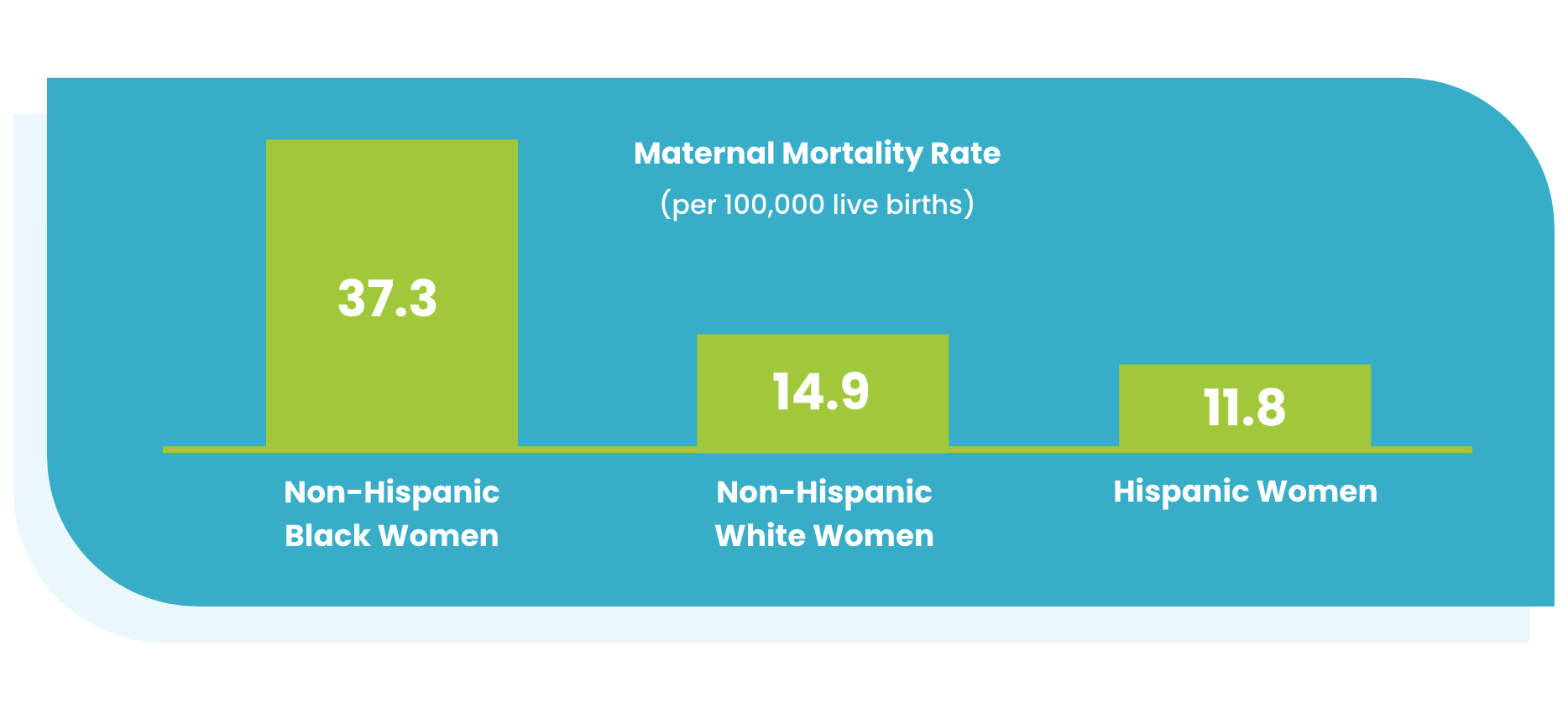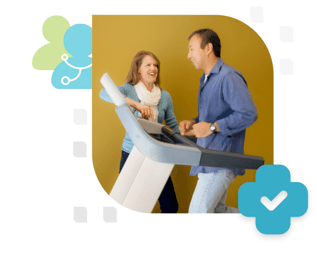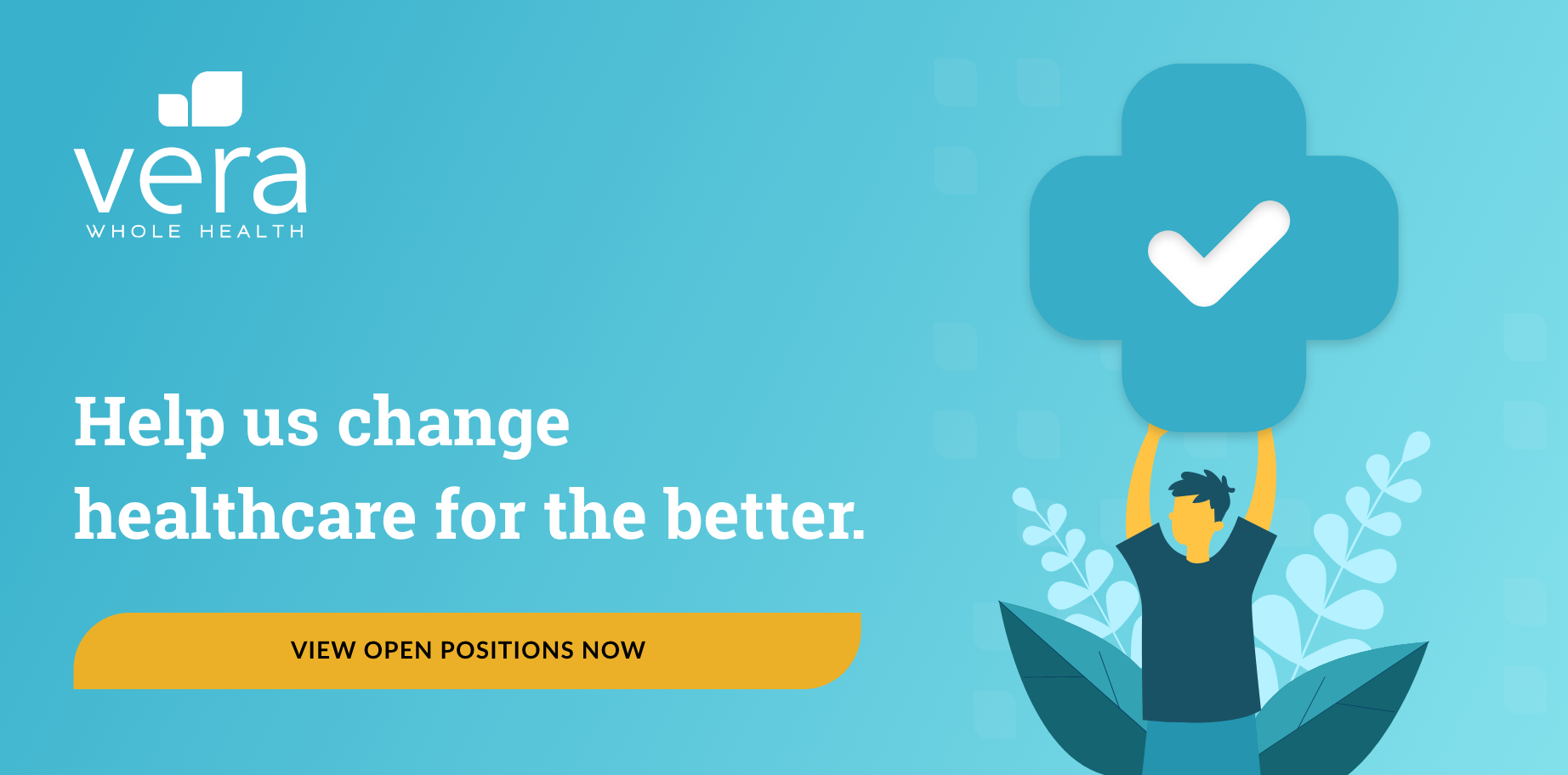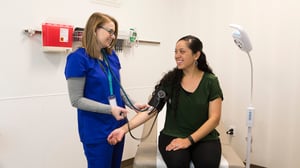Health equity occurs when every person has the same ability to live to their greatest health potential. Currently, social determinants of health have a tremendous impact on people’s access to care and their overall health outcomes. Social determinants of health include the conditions into which people are born and the places they study, work, and more. For example, studies have found large disparities in material mortality and outcomes based on race and ethnicity.
Working toward health equity is a long and complex task, one that is impossible to achieve without clear intent. It requires commitment from leadership and, because there are so many different elements contributing to health disparity, a multitude of solutions. Income disparity, joblessness, race, ethnicity, preferred language, and more, all have huge impacts on health outcomes.
At Vera Whole Health, we’re committed to asking the hard questions, putting in the work, and building new and purposeful strategies for achieving health equity.

Everything together in one place
Health disparities make engaging with healthcare systems challenging for some patients. Time and money are valuable, and often limited resources, a fact which can limit access to care. With Vera’s advanced primary care (APC) model, many services are available under one roof, allowing patients to address multiple concerns in one visit and reduce costs.
 Patients save time and money when:
Patients save time and money when:
-
- Care is streamlined: They don’t have to take a full day away from their work or families to access medical treatment
- They receive prescriptions immediately after their appointments: Vera care teams can dispense medications within their own pharmacies at reduced or no cost.
- No additional trips are required: Onsite drawing labs perform services at reduced or no cost.
- Additional support is available: Vera Whole Health coaches are available onsite to offer additional support.
- Visits within a Vera care center are cost-effective: Many patients have lower or no copays.
How telehealth helps
Telehealth is also emerging as a valuable tool for addressing health disparities. Patients without the time or means of transportation to physically travel to a care center can access many types of care from any location. COVID-19 had a big impact on the growth of telehealth across the healthcare landscape. Vera is proud to have integrated these services into the APC model long before the pandemic arrived, making them personalized and meaningful parts of patients’ larger care journeys.
People instead of numbers
Patient engagement is a key aspect of addressing health disparities. When patients are invested in their own healthcare journeys, they’re more likely to show up and take small, everyday steps to improve their health, despite roadblocks or challenges.
Vera has a tremendous advantage in the quest for health equity, because we know each of our patients. They are individuals, not merely numbers or statistics. We already know their health history and needs when they visit. Our teams listen empathetically, communicate, and serve, actions which are built into our culture.
Longer visit times also allow providers to form trusting relationships with patients, understanding their problems and solving for more than just the most pressing issues.
Engage with people the way they want to be engaged
Patient engagement needs to be about meeting a person where they are, rather than forcing them to fit in with your preferred ways of doing things. It requires investigation, asking questions, and listening to the answers.
- Where is this person at and what will it take to meet them there?
- How do we bring them along on their own health journey?
- What language would they prefer we engage them with?
- What method of engagement will be meaningful to them? Would they prefer a letter, phone call, email, or text?
Spamming each patient with the same message, via the same form of communication, will only reach a certain percentage. Instead, engage intentionally, in the way that is best for your patients. They’ll be far more likely to pay attention to your message and participate.
 Understanding the data
Understanding the data
At Vera, we also look at population data to position our teams so they can direct their efforts to the areas where they will have the most impact. Data also allows us to understand whether or not a patient is coached, which patients are of high and rising risk, and which are experiencing disparities in health. When we’re able to gain a true understanding of the needs of different populations, we’re better able to build plans for how best to meet those needs.
There are limitations (and opportunity)
We would be remiss not to mention the main way in which we’re limited in addressing health disparities at Vera. Because roughly 90% of our patients are employed by a client, they have access to an APC center and the services available within.
This places limitations on the data we’re able to collect and the help we can provide to those who aren’t employed. However, with our capabilities, there is still a lot Vera can do to make a real difference, and since we are at the beginning of our health equity journey, there is a lot of opportunity ahead.
A focus on hiring
To be effective in addressing health disparities, healthcare organizations also must take a long look at their candidate pools and hiring practices. They need to collect and analyze data, so they can create a baseline understanding of:
- Who are we?
- Who are we targeting?
- Who is applying?
- Who are we accepting?
- Who are we not accepting?
- Who is leaving and why?
Vera is working to build care center teams that reflect the communities they serve. Teams with knowledge of local community resources or languages are invaluable in meeting patients where they’re at.
Because closing gaps in health inequity is a top priority for Vera in 2022, there are a number of roles within the organization dedicated to meeting this goal. From patient-facing positions to those working in field support, including recruiters and marketers, there’s plenty of space for new employees who are passionate about health equity.
About The Vera Way

The Vera Way is a framework of skills training for Vera employees that is based on the concepts of intentional engagement. It was founded on coaching methodologies including empathetic listening and acceptance. The Vera Way is built around helping a person, regardless of their situation or status.
It influences how care teams work with patients, allowing them to more meaningfully address health disparities and the challenges that arise from them. The Vera Way also affects the ways team members communicate, collaborate, and solve problems with each other.
Change comes from the top
At Vera, health equity is one of the core tenants discussed monthly in leadership meetings. People in leadership roles are proactive about championing health equity as a required lens on all reporting, internal documentation, and programs. All employees in leadership roles have also attended an in-depth training session on the subject to increase their knowledge and thus better serve all Vera patients.
Without investment and excitement from leadership, change is slow and can be impossible. Fortunately, at Vera, that’s not the case!
You can make a difference

Relationships are at the heart of what we do here. We actively work to build relationships with our patients. We care about who our patients are and what they’re struggling with. We want them to be successful and engaged in their care, because outcomes are so much better when this is true. We offer them connected, coordinated, whole-person care, rather than disparate systems.
This is why we’re uniquely positioned to make a difference.
It’s an inspiring time at Vera, as we’re intentional about how we interact with our patients and each other; with our hiring practices, training, and leadership; and with the way we each show up each day. Each day we lay important groundwork and take new steps toward real change.
If you’re interested in joining a team that’s committed to addressing health disparities, Vera might be the place for you. There’s energy behind solving these problems and an investment in creating solutions here. We’d love to find team members who are just as dedicated as we are to achieving health equity.
Sign up
Join our email list to receive the latest open positions, Vera Careers news, and more.







